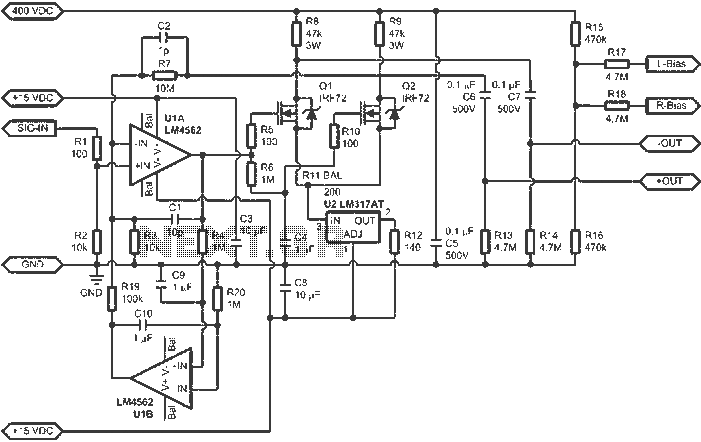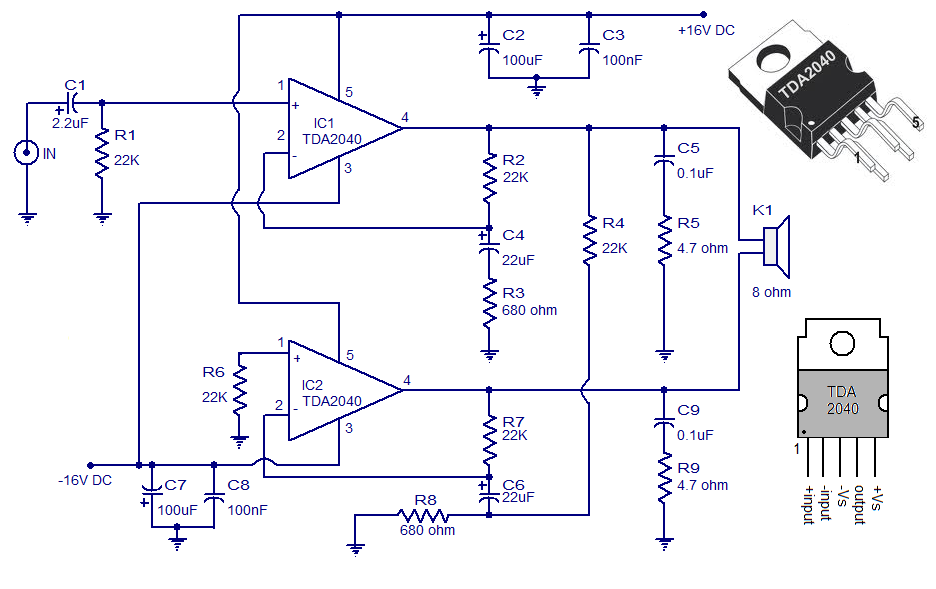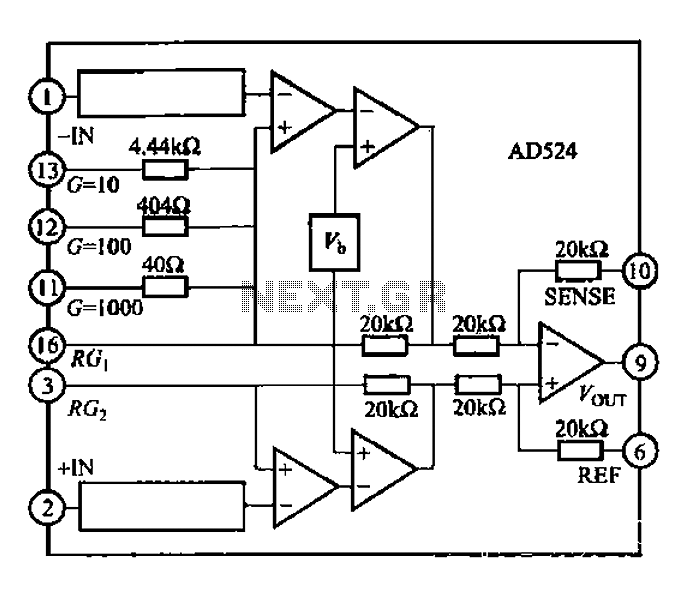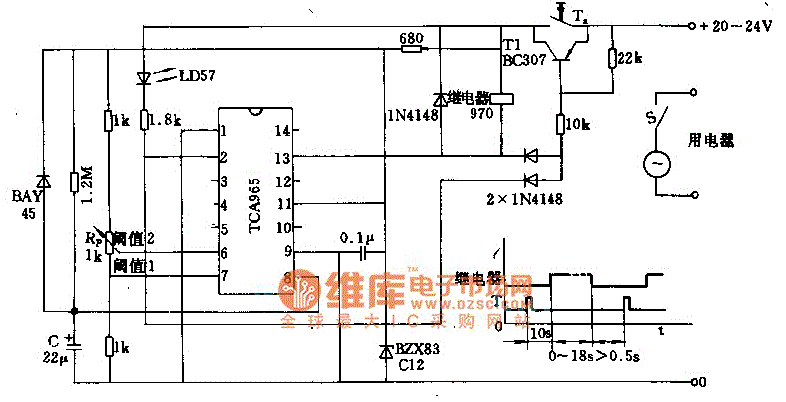
ESL amplifier circuit diagram

When connected to popular Stax Class 1 electrostatic headphones, the design illustrated in the figures may operate across the full audio bandwidth with a transmission voltage close to 200 Vp-p. Although the resistor divider can be modified to provide a bias voltage of up to 400 VDC, the figure depicts the use of a DC bias set at 200 V. It is important to note that many types of Stax Class 1 headsets exhibit similar demand-driven and biased characteristics, making this design suitable for those models as well.
The described circuit is tailored specifically for Stax Class 1 electrostatic headphones, which require a high-voltage bias to function effectively. The circuit operates within the full audio bandwidth, ensuring that it can reproduce a wide range of frequencies accurately. The transmission voltage of approximately 200 Vp-p is significant as it provides the necessary drive to the electrostatic transducers within the headphones.
The design incorporates a resistor divider network that can be adjusted to achieve different bias voltages. While the standard configuration uses a DC bias of 200 V, the flexibility to increase this to 400 VDC allows for compatibility with various models of Stax Class 1 headsets, which may have differing bias requirements. This adaptability is crucial for users who may own multiple headphone models or require specific operational parameters.
In practical implementation, the circuit should be constructed with high-voltage rated components to ensure reliability and safety during operation. Proper layout and shielding techniques are also recommended to minimize noise and interference, which can adversely affect audio quality. Additionally, attention should be given to the power supply design, ensuring it can deliver the necessary voltage and current without introducing fluctuations that could impact performance.
Overall, this circuit design provides a robust solution for driving Stax Class 1 electrostatic headphones, accommodating their unique operational needs while delivering high-fidelity audio.When connected to popular Stax Class 1 electrostatic headphones, the design shown in the figures may be on the full audio bandwidth transmission close 200Vp-p voltage. Although you can change the .png">resistor divider to provide a bias voltage of up to 400VDC, the figure shows the use of a DC bias to 200V. Noting that many kinds of Stax Class 1 headset have a similar demand-driven and biased, so this design is also applicable to these models.
The described circuit is tailored specifically for Stax Class 1 electrostatic headphones, which require a high-voltage bias to function effectively. The circuit operates within the full audio bandwidth, ensuring that it can reproduce a wide range of frequencies accurately. The transmission voltage of approximately 200 Vp-p is significant as it provides the necessary drive to the electrostatic transducers within the headphones.
The design incorporates a resistor divider network that can be adjusted to achieve different bias voltages. While the standard configuration uses a DC bias of 200 V, the flexibility to increase this to 400 VDC allows for compatibility with various models of Stax Class 1 headsets, which may have differing bias requirements. This adaptability is crucial for users who may own multiple headphone models or require specific operational parameters.
In practical implementation, the circuit should be constructed with high-voltage rated components to ensure reliability and safety during operation. Proper layout and shielding techniques are also recommended to minimize noise and interference, which can adversely affect audio quality. Additionally, attention should be given to the power supply design, ensuring it can deliver the necessary voltage and current without introducing fluctuations that could impact performance.
Overall, this circuit design provides a robust solution for driving Stax Class 1 electrostatic headphones, accommodating their unique operational needs while delivering high-fidelity audio.When connected to popular Stax Class 1 electrostatic headphones, the design shown in the figures may be on the full audio bandwidth transmission close 200Vp-p voltage. Although you can change the .png">resistor divider to provide a bias voltage of up to 400VDC, the figure shows the use of a DC bias to 200V. Noting that many kinds of Stax Class 1 headset have a similar demand-driven and biased, so this design is also applicable to these models.





